What is it mucous membrane pemphigoid?
Mucous membrane pemphigoid is a autoimmune disease characterized by blistering lesions on mucous membranes. The areas commonly involved are the oral mucous membrane (mouth lining) and conjunctiva (mucous membrane that lines the inner surface of the eyelids and the outer surface of the eye). Other areas that may be affected include the nasal passages, esophagus, trachea, and genitals. Sometimes the skin can also be involved where blisters can be found on the face, neck and scalp.
Mucous membrane pemphigoid is also called scar pemphigoid or oral pemphigoid.
Brunsting Perry cicatricial penmphigoid is a rare variant in which located crops of recurrent blisters appear inside urticarial plates, usually on the head and neck. The blisters can burst and cause blood-crusted plaques and scars.
Who gets mucous membrane pemphigoid?
Mucous membrane pemphigoid is predominantly a disease of the elderly with a peak incidence around 70 years old. However, childhood cases have been reported. It appears to be twice as common in women as in men.
What are the signs and symptoms of mucous membrane pemphigoid?
| Site | Characteristics |
|---|---|
| Eye |
|
| Mouth |
|
| Skin |
|
| Nose |
|
| Genitals |
|
Mucous membrane pemphigoid
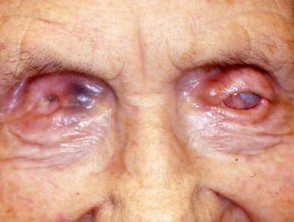
Cicatricial pemphigoid
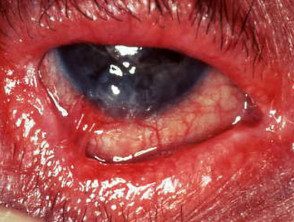
Cicatricial pemphigoid
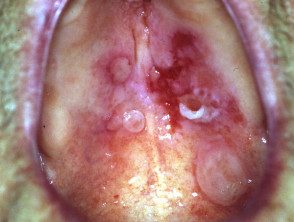
Cicatricial pemphigoid
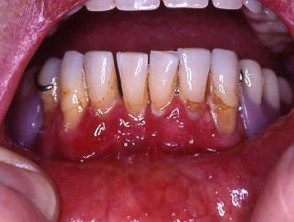
Cicatricial pemphigoid

Cicatricial pemphigoid
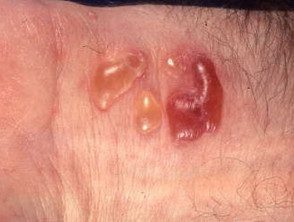
Cicatricial pemphigoid
What causes mucous membrane pemphigoid?
Mucous membrane pemphigoid is an autoimmune blistering disease, which basically means that an individual's immune system begins to react against its own tissue. In this particular case autoantibodies They react with proteins found in mucous membranes and skin tissue, resulting in blistering lesions. The binding site appears to be within the anchoring filaments that help epidermis (outer layer of skin) adhere to the dermis (inner layer of the skin).
How is mucous membrane pemphigoid diagnosed?
Mucous membrane pemphigoid is suspected by the clinical appearance of blisters and scars. The diagnosis must be confirmed by biopsy for histopathological examination, and often multiple biopsies They are necessary from the edge of the blistered or ulcerated tissue.
An additional specimen of adjacent the tissue can be examined by direct immunofluorescence detect immunoglobulins along the basement membrane. Blood samples can be tested for skin antibodies by indirect immunofluorescence.
Patients with severe illness should undergo a general health and nutrition evaluation, such as ulceration of the mouth and esophagus can make feeding difficult.
The severity of mucous membrane pemphigoid can be assessed using the mucous membrane pemphigoid disease area index (MMPDAI).1
Treatment of mucous membrane pemphigoid
the primary The goal of treatment is to stop blistering, promote healing, and prevent scarring. Mucous membrane pemphigoid is a particularly difficult disease to treat, as it can affect many different parts of the body. A team of medical specialists is usually required for general care. Regular exams are necessary.
Local medical treatment depends largely on the organs involved.
| Organ | Specific treatments |
|---|---|
| Mouth, nose and skin |
|
| Eye |
|
| Esophagus, trachea and larynx |
|
| Vulva, vagina and anus |
|
Systemic Therapy for mild disease may include a tetracycline antibiotic (doxycycline, minocycline, lymecycline) or, less commonly, colchicine, nicotinamide, salazopyrine, sulfapyridine, or sulfamethoxypyridazine.
Systemic therapy for severe disease usually involves a combination of systemic corticosteroids (sometimes in high doses), dapsone, and immunosuppressive agents, particularly:
- Cyclophosphamide
- Azathioprine
- Mycophenolate
- Methotrexate
- Cyclosporine
-
Rituximab
Usually a combination of medications is used and the treatment is slowly effective. The ultimate goal is to reduce the dose of systemic steroids while maintaining immunosuppression. Long-term treatment and monitoring are generally required.
Proper wound care is particularly important to promote healing and minimize scarring.
Mucous membrane pemphigoid is a chronic, progressive disease that responds slowly and often incompletely to treatment. Spontaneous referrals They are rare.

